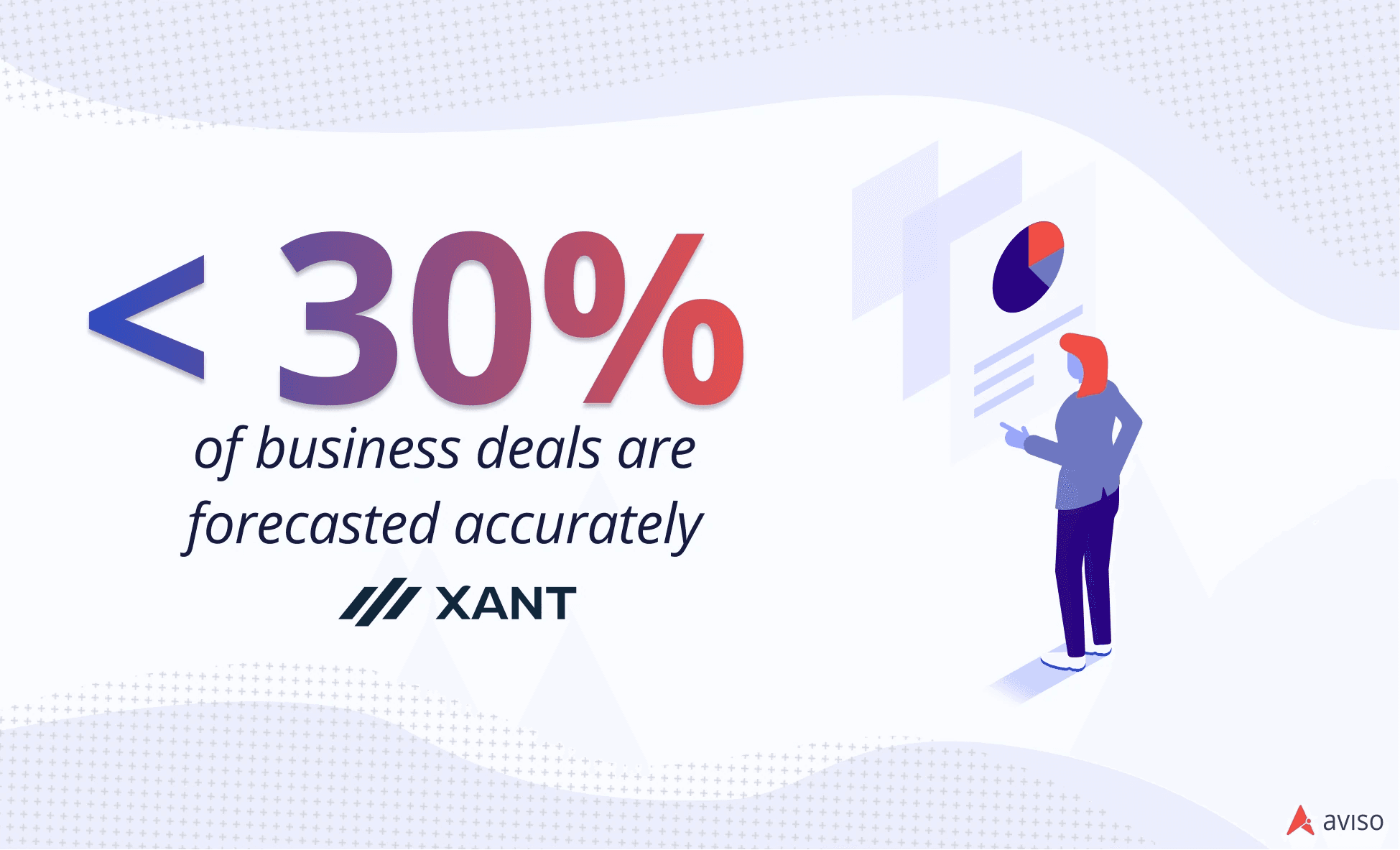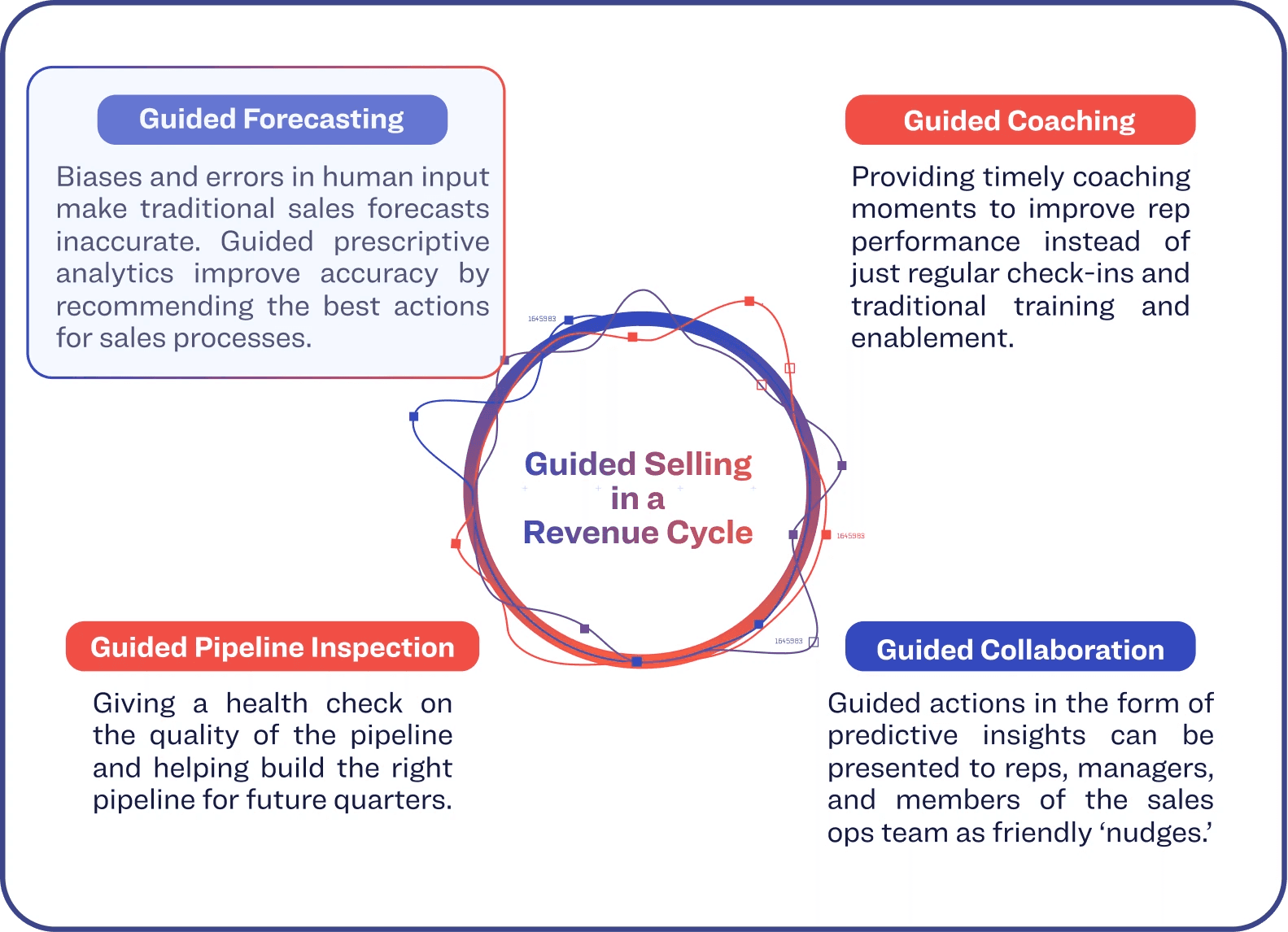This Is Why Your Sales Forecasts Are Inaccurate
Dec 18, 2020
Regardless of if you’re a startup looking to scale or an industry leading corporation, sales forecasting is essential for the growth and success of any business. At the very forefront, a sales forecast paints your company’s financial story. By giving sales reps a glimpse into future revenue levels based on consumer demands and trends, your forecasting can better guide short-term and long-term goals and performance. While sales forecasting methodology varies from business to business, an accurate forecast provides sales teams and leaders a clear plan for growth.
Why Is Sales Forecasting Important?
An accurate sales forecast helps drive wiser business decisions around setting goals, budgeting, and other revenue-impacting factors. Beyond that, forecasts have the power to influence current and future deals in the sales pipeline from beginning to end. An affective forecasting model also allows sales teams to identify potential blockers and course-correct when trending off target. Here’s how an accurate sales forecast can help each level of the sales hierarchy:
Helps give confidence to upper management, including the CRO and CFO, about business and revenue continuity
Is fundamental for sales reps and client-facing teams to set measurable and attainable goals
Helps managers set realistic quotas and maintain expectations from sales reps
However, accurately predicting sales forecastas is not always a clear-cut process. According to Xant, only 28.1% of forecasts are actually close to being accurate. That means that a whopping 71.9% of sales forecasts are inaccurate. With all that being said, sales forecasts don’t have to be perfect to be valuable, but overly inaccurate forecasts are problematic and can lead to poor business decisions.

Why Most Sales Forecasts Are Inaccurate?
1. Poor CRM Data
CRM software is widely used by sales teams to store consumer prospect information, track customer interactions, and better manage their relationships. In fact, 91% of companies currently have a CRM system in place. However, one of the biggest barriers to CRM effectiveness, as well as a driving factor to inaccurate forecasts, is bad data. Root causes of poor CRM data ranges from duplicate data and invalid contact information to inconsistent records and data decay. According to Gartner, around 30% of data within CRM systems is outdated within 12 months. A critical side effect to a lack of quality data is poor prospect and customer relationships, which counteracts the purpose of CRM tools. Not to mention, purging bad data is inefficient and costly, resulting in lost opportunities and wasted time. Studies show that sales reps waste 27%+ of their time recovering from bad CRM data.
2. Spreadsheets Are Antiquated and Outdated
With poor CRM data driving inefficiencies in sales forecasts, it is necessary for companies to examine their data input methodologies. A majority of companies have used and continue to run their forecasting in Excel, leveraging Excel’s built in forecasting, regression, and data analysis tools. However, in the new digital landscape of automation, this traditional forecasting method has been proven to be inefficient, complex, and prone to error. With an abundant amount of data cramped into sales forecast spreadsheets, it can be difficult to identify what data is really important and meaningful. Moreover, merging multiple spreadsheet files into a consolidated file is difficult and time-consuming. The more spreadsheets and higher volume of data it holds, the more prone they are to human errors, resulting in misreporting. In contrast to sales forecasting software, Excel sheets rarely keep up with real time data and constantly changing market and consumer needs.
3. Time Series Forecasting Approach
The time series forecasting methodology is another pitfall of ineffective sales forecasting. This approach predicts future values based on past data in relation to previous sales. Thus, the time series forecasting method fails to take into account constantly evolving consumer demands, market trends, and economic changes. Rather than implementing this approach as the foundation of the forecast, it should be used solely as a benchmark or method of comparison.
4. Cognitive Biases & Lack of Personal Accountability
A major disadvantage to manual data entry is cognitive biases. Whether we realize it or not, we are all consistently influenced by unconscious biases and heuristics, especially when making tough decisions where the outcome is unknown. If left unidentified, we can become our own worst enemy when it comes to building an accurate sales forecast. A recent study showed that nearly 90% of Demand Planners were impacted by a tendency to consistently over (or under) estimate in one direction. Inaccurate forecasting due to predispositions can negatively impact business or investing decisions and can lead to irrational actions due to misinformation. Lastly, a common barrier to manual data entry is the lack of accountability. Forecasting is more than just having the facts at hand. It’s also about making informed judgments and insights driven by your data. If not treated as a critical component to the forecasting process, sales reps may be more inclined to manipulate data to make their forecasts appear higher. This may lead to overconfidence about winning deals, as well as sandbagging to lower management’s expectations or delay reporting until it suits them best.
Solutions & Best Practices:
Automated Sales Forecasting
With AI-driven data and insights, your sales forecast can better inform pipeline inspection and deal management to drive timely team actions. Unlike traditional sales forecast methods, machine learning tools generate real-time, accurate data on forecasting solutions within seconds. Sales reps can even run automated what-if scenarios with data-driven insights without having to worry about any cognitive biases. Most importantly, auto machine learning software is built to get smarter over time, thus generating more accurate forecasts simultaneously. Automating your sales forecasting methodology not only improves data quality, but also saves time, effort, and money so your sales teams can focus their attention on things that matter most. Adopting and implementing powerful, yet affordable, computing software is the ultimate bang for your buck. Learn more about the advantages AI Guided Forecasting by clicking on the image below:

Sales Leadership
To combat barriers of accountability throughout the forecasting process, it is essential for sales leaders to verbalize the importance of sales forecasting accuracy. Holding meetings and weekly forecast calls can ensure regular inspection and execution by your sales reps and teams. Moreover, sales leaders should focus on key metrics and explain how that data is being used and what it is being used for. Data is the foundation to an accurate forecast and placing an emphasis on its importance will result in higher levels of compliance with data entry.
Conclusion
At Aviso, we place our customers at the very forefront. Our product combines the best of predictive AI with human judgement to deliver revenue intelligence, drive course corrections, and provide guidance to sales teams and leaders all on one platform. During these unprecedented times, we remain committed to helping our customers drive business outcomes with AI-driven insights specific to the pandemic. With Aviso’s updated COVID indicators, you can discern COVID induced revenue risk from regular revenue risk. To learn more, check out our page on Guided Selling for more about the ways Aviso can help you better align your sales teams, manage your deals, and drive overall revenue growth.








